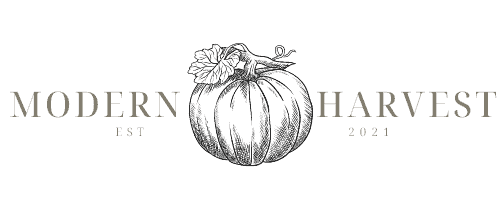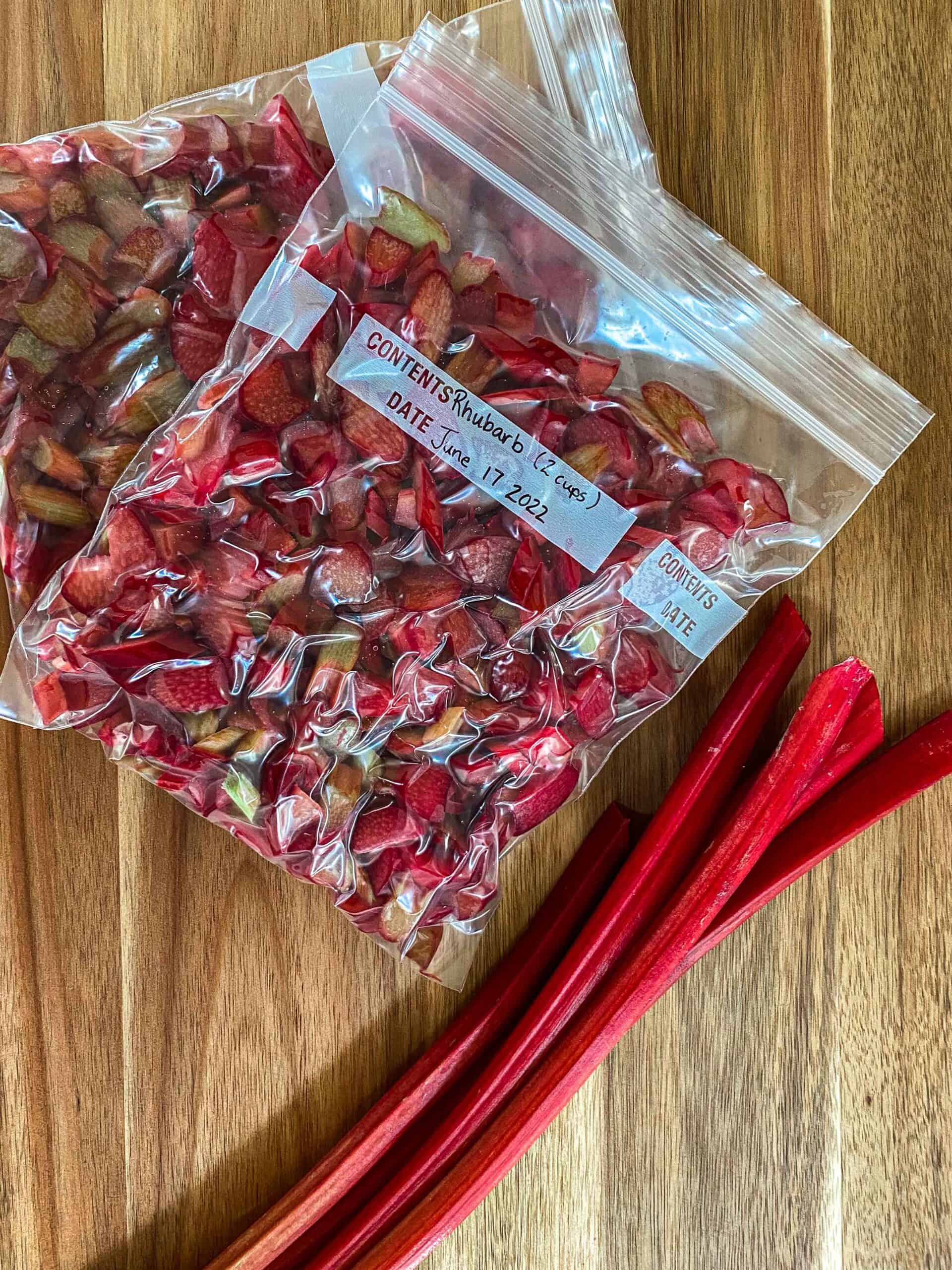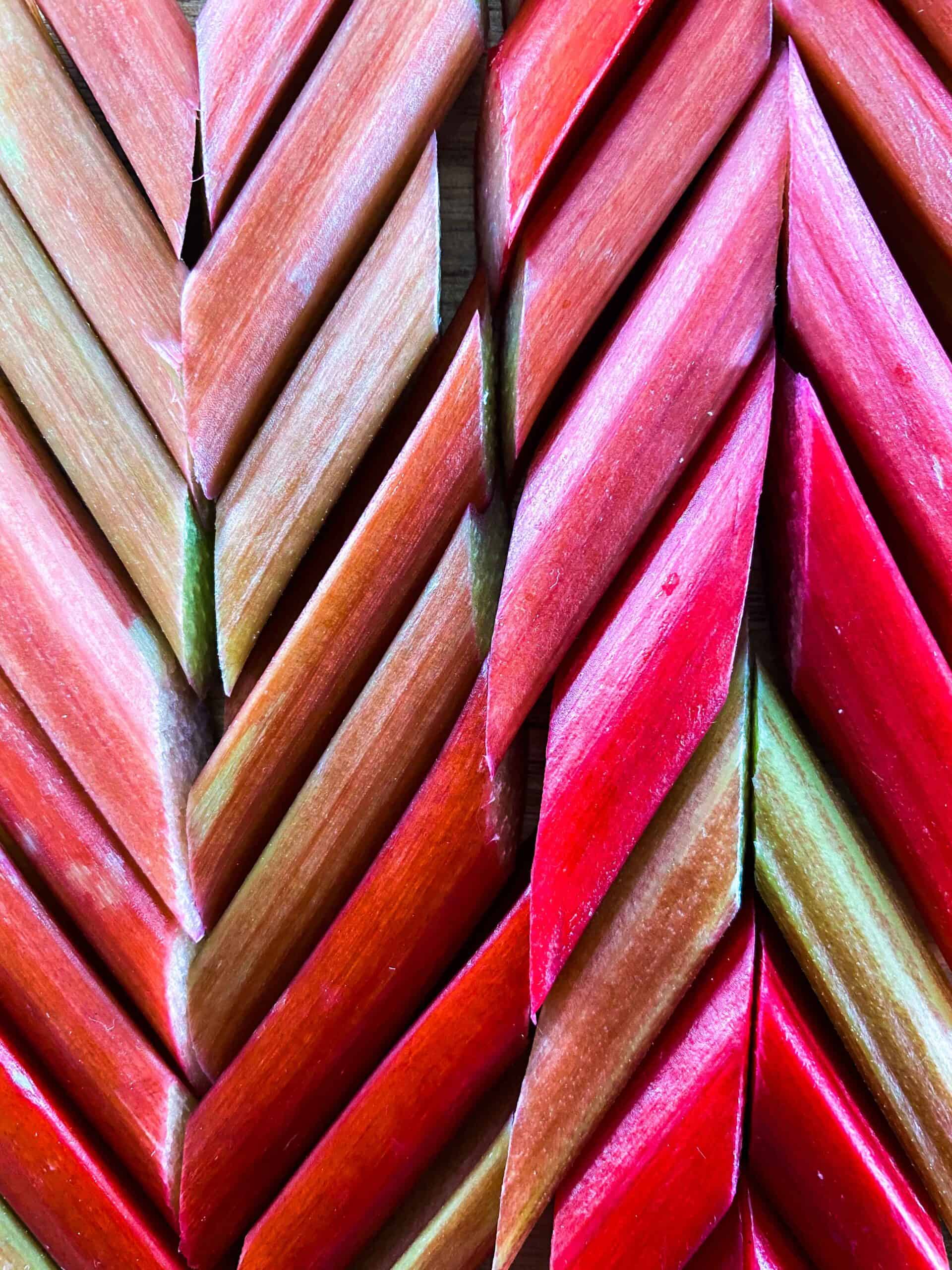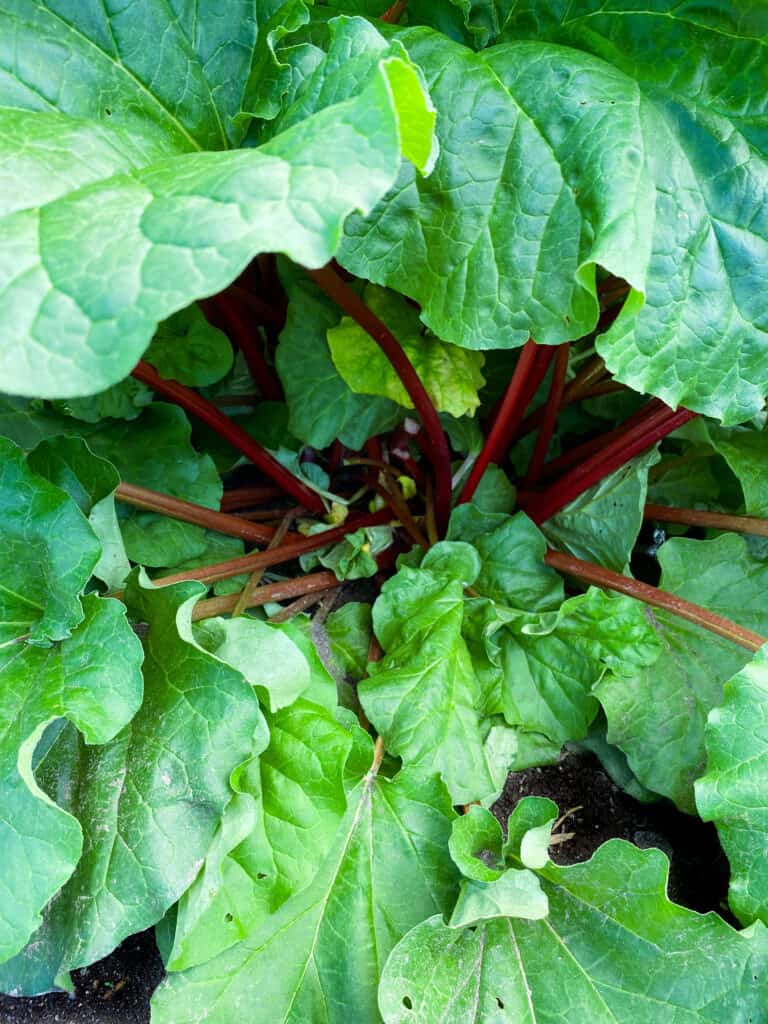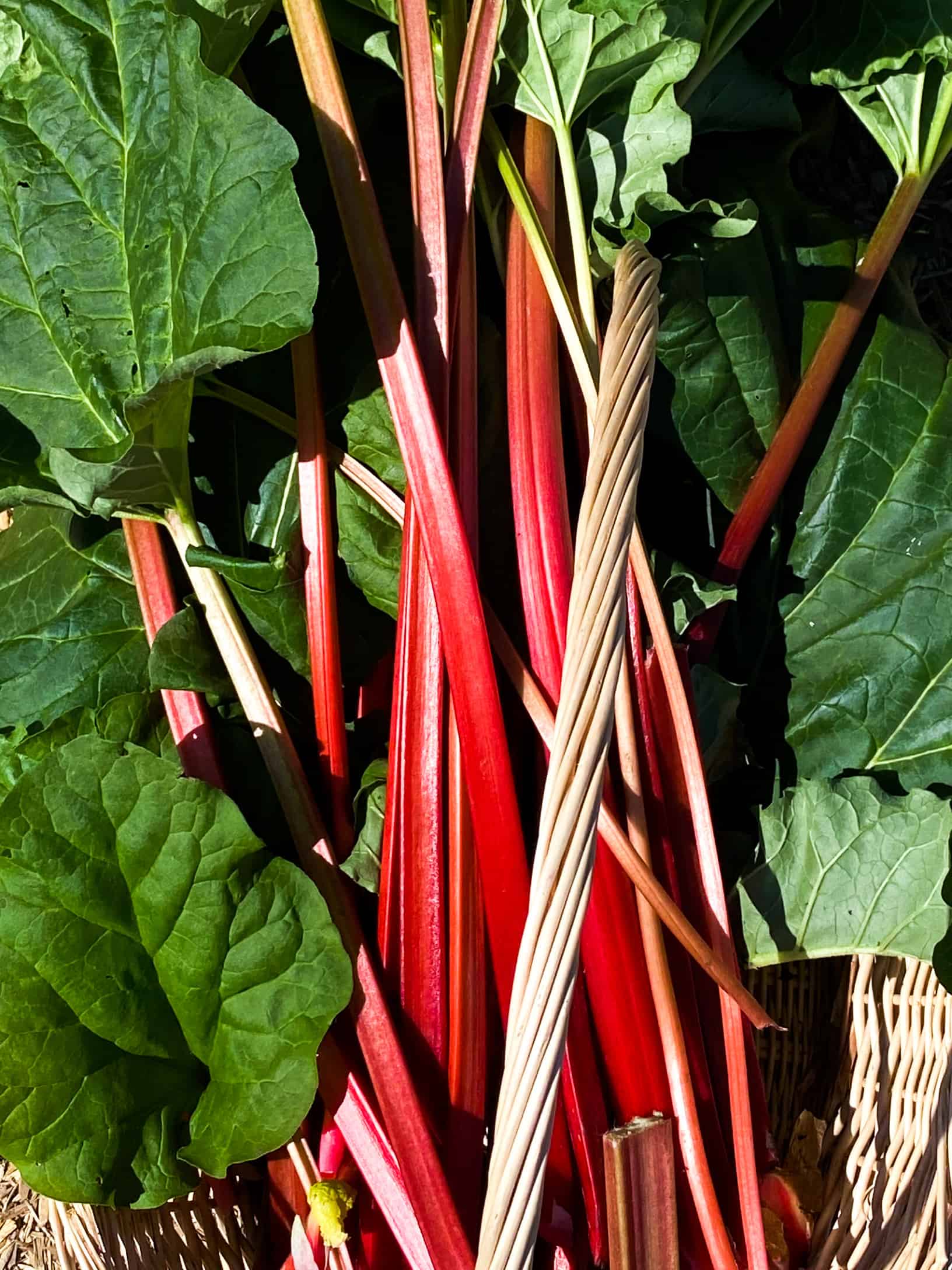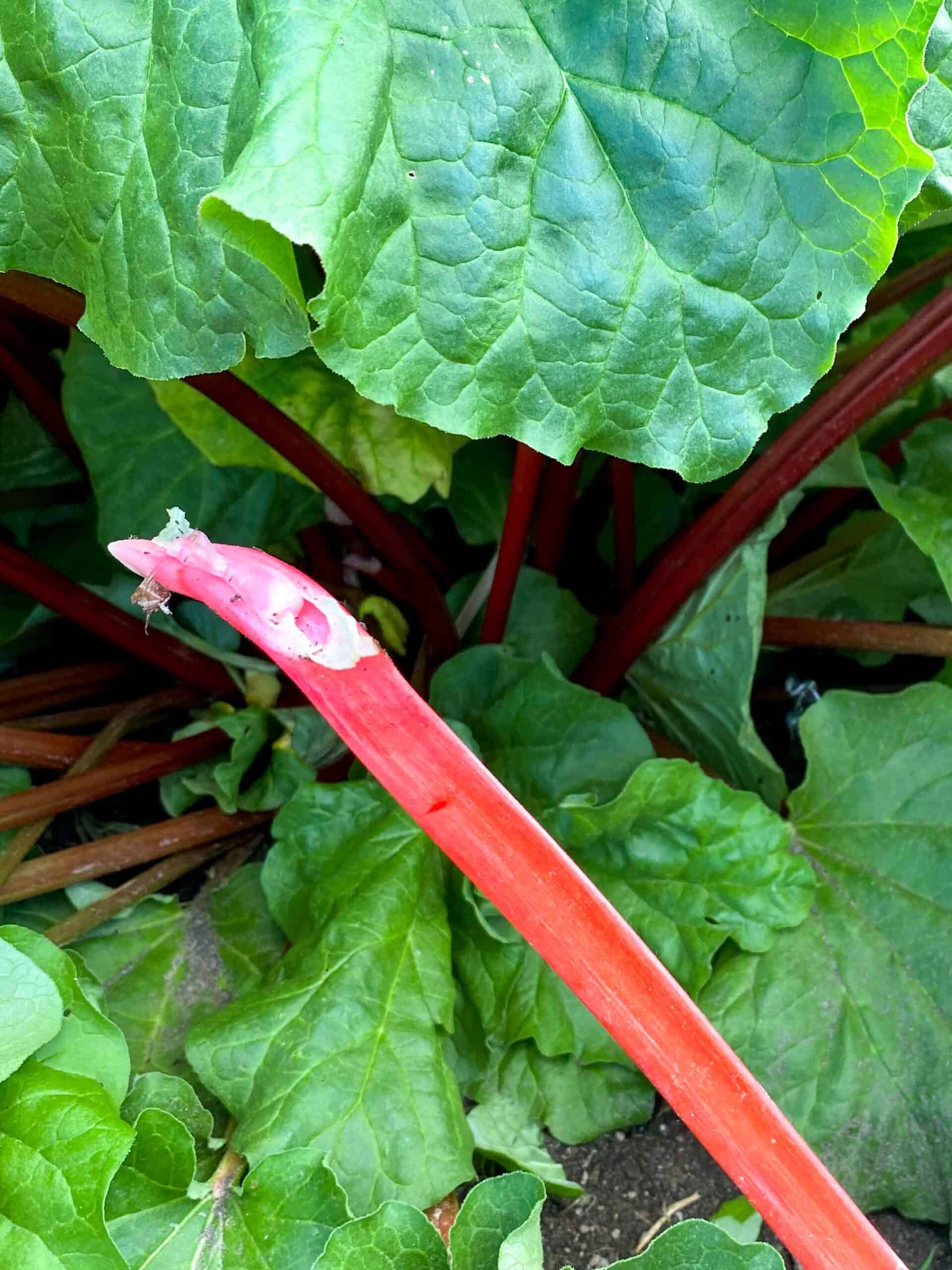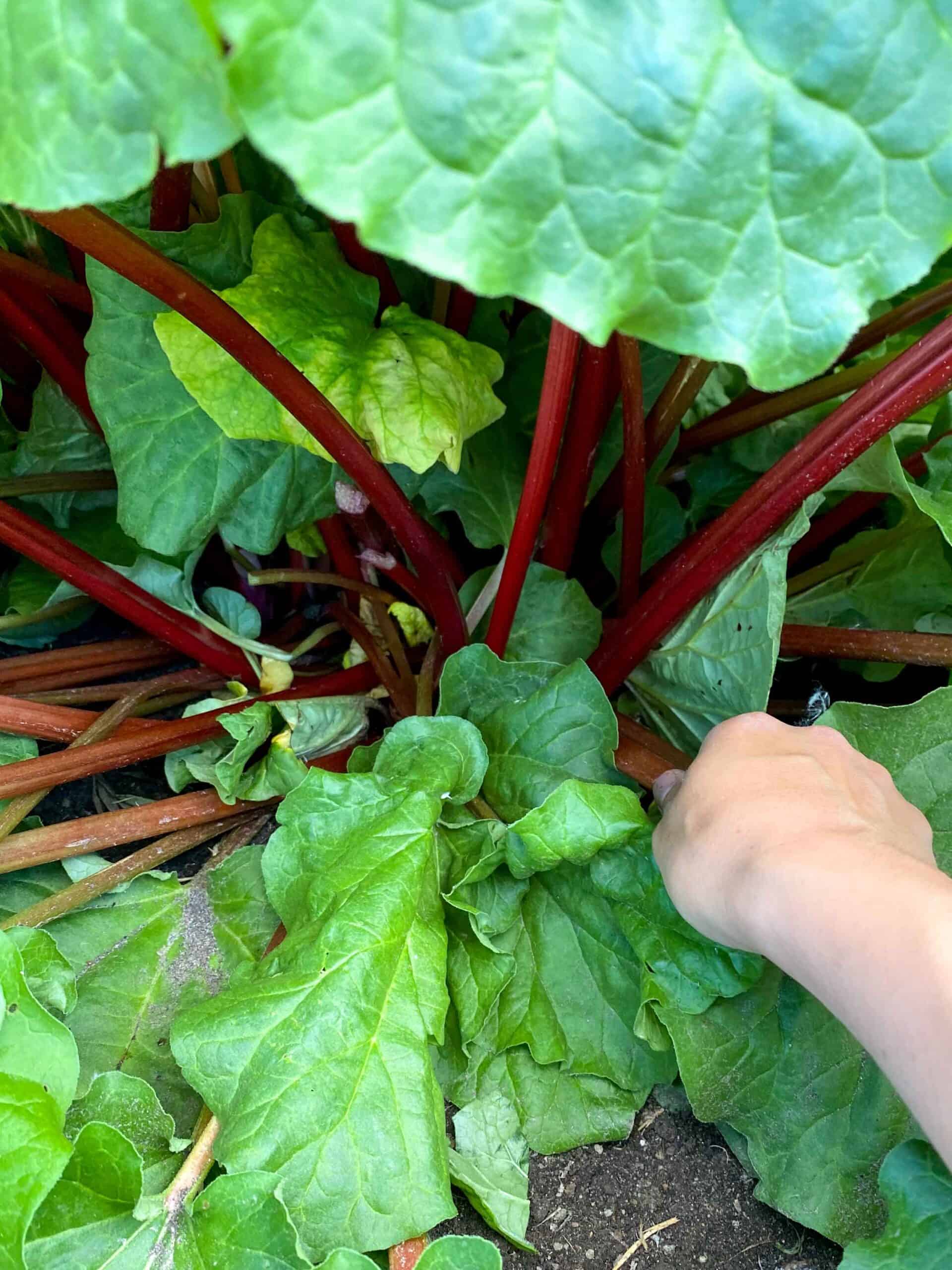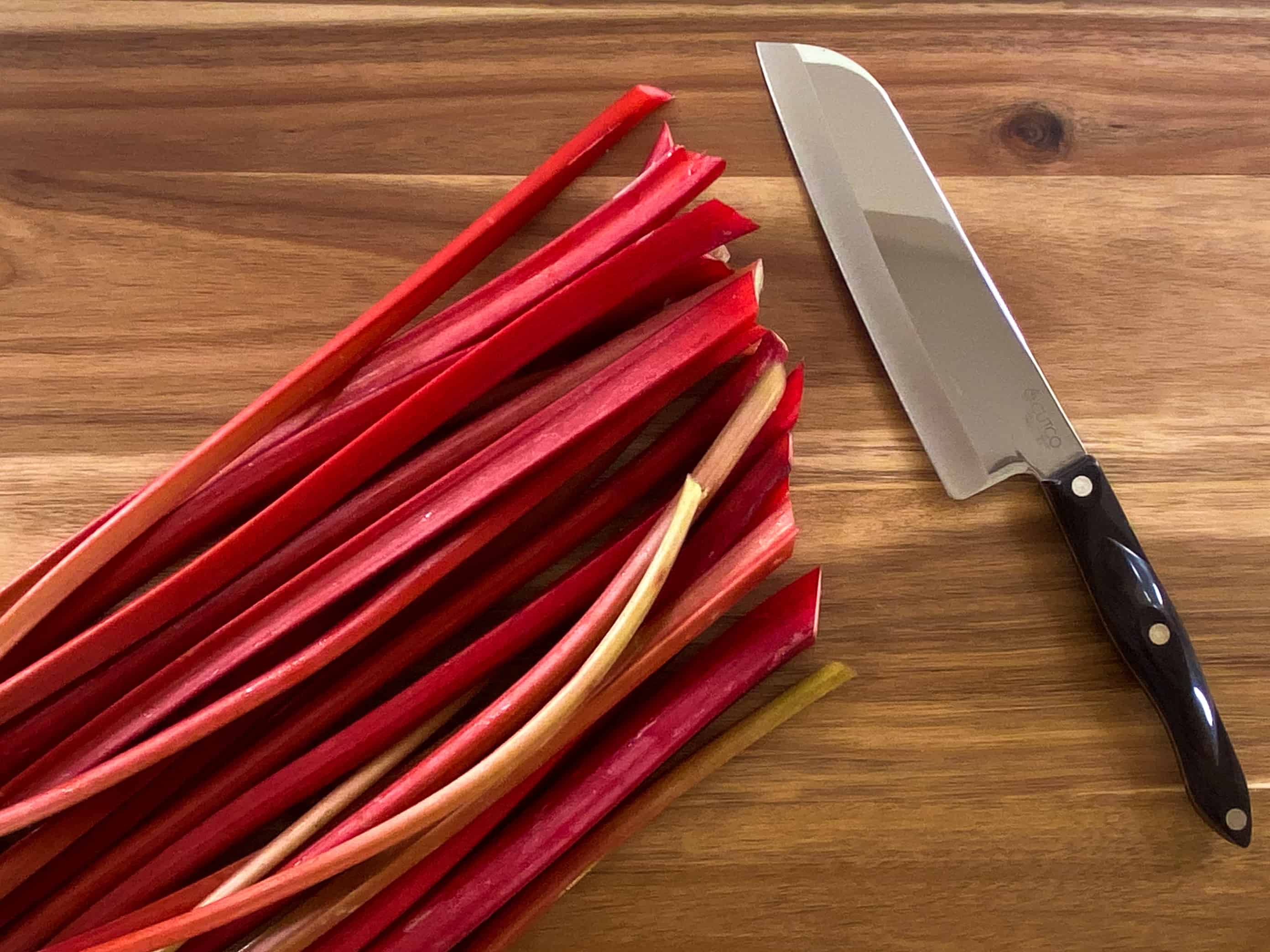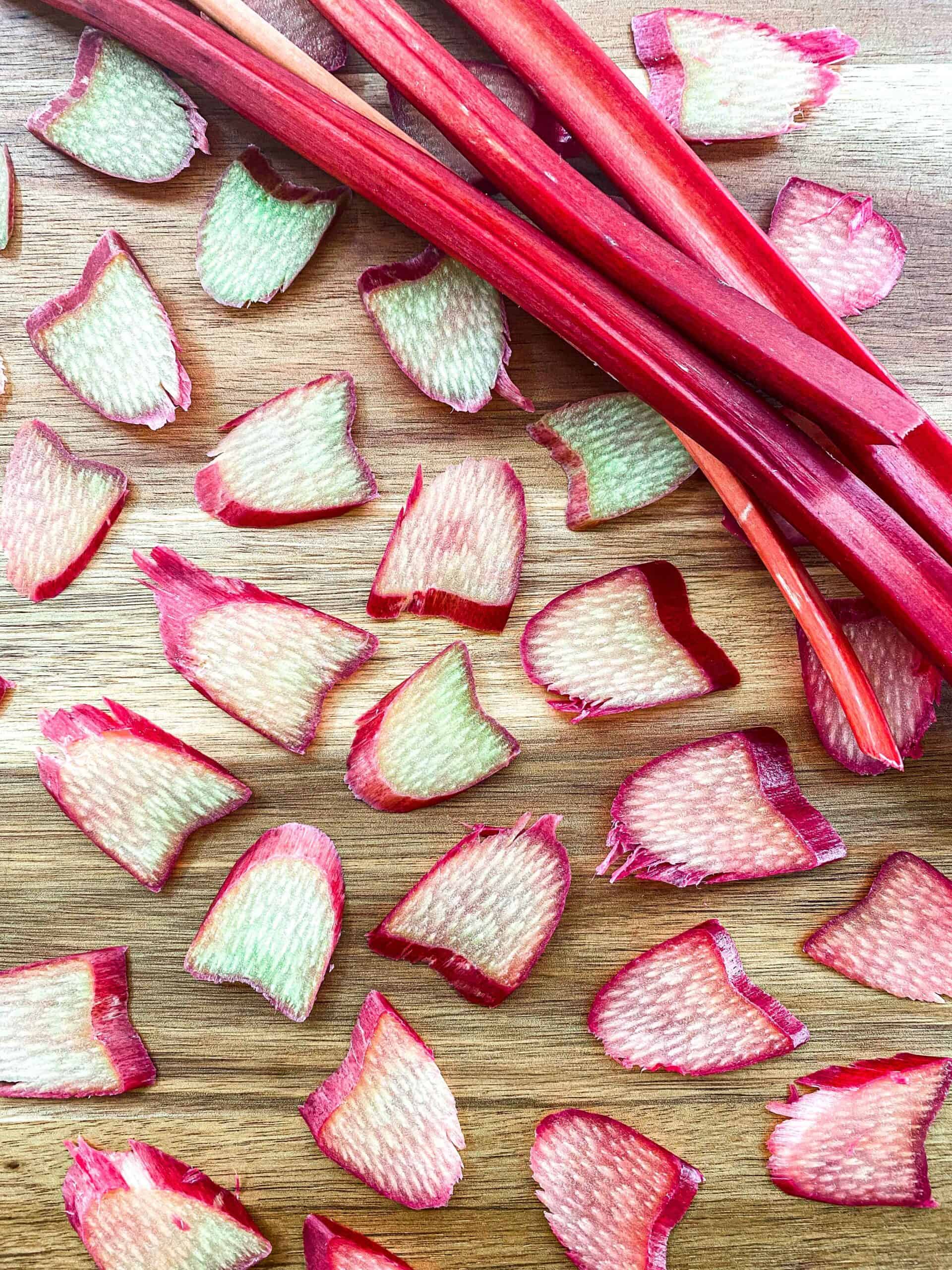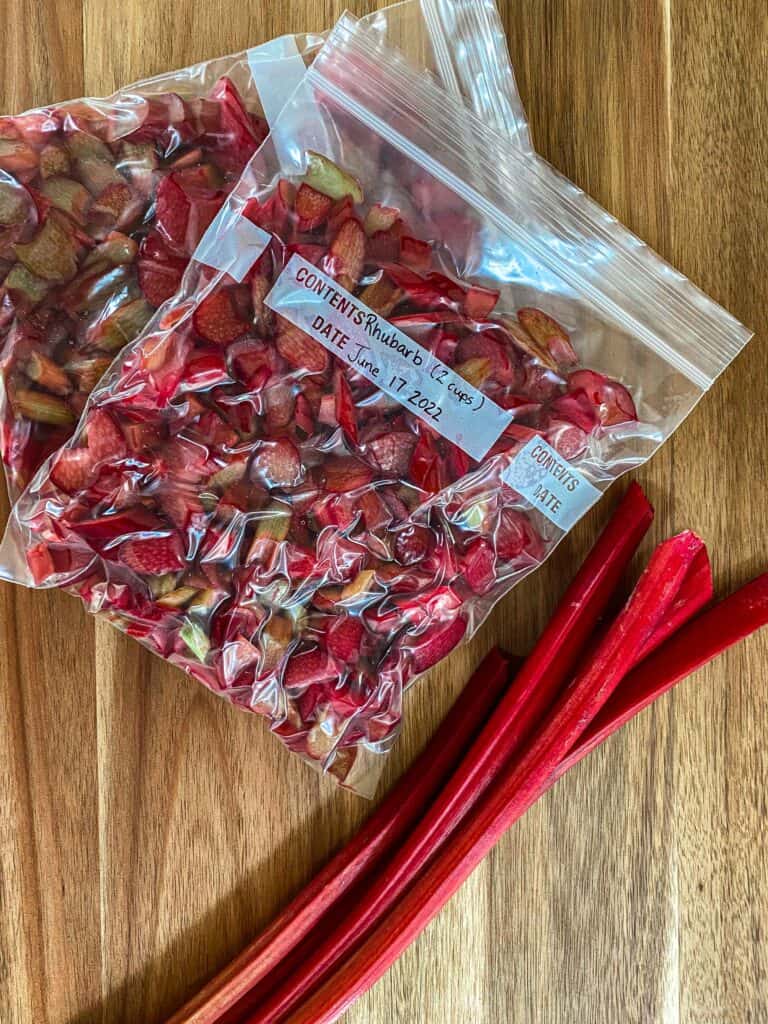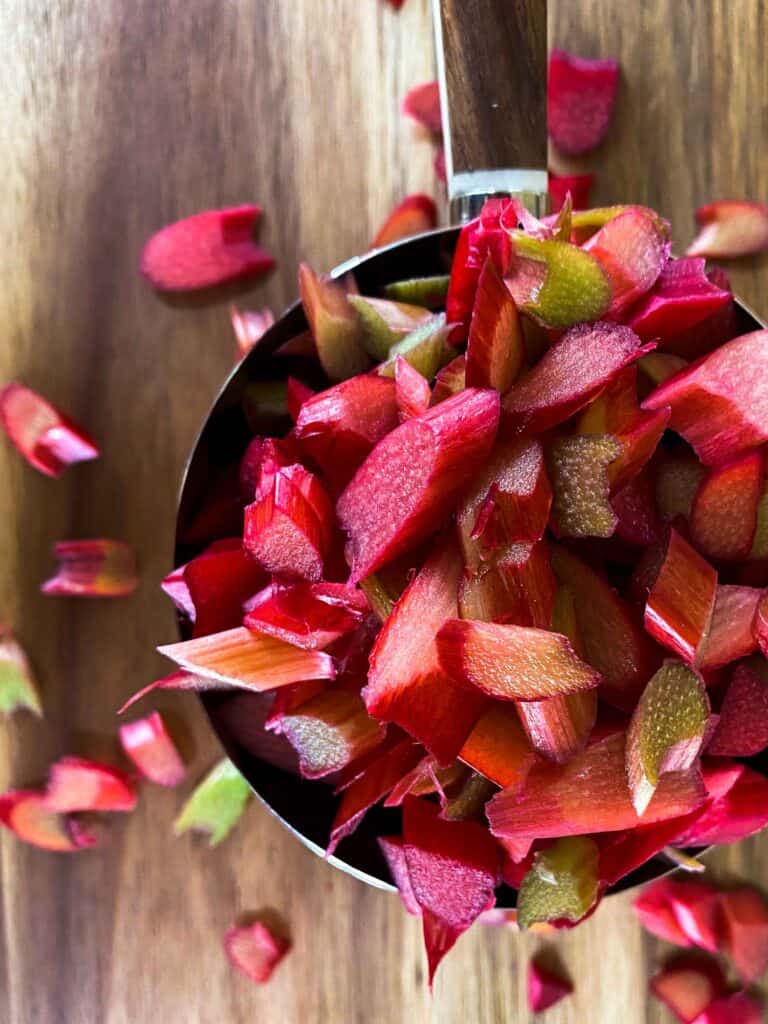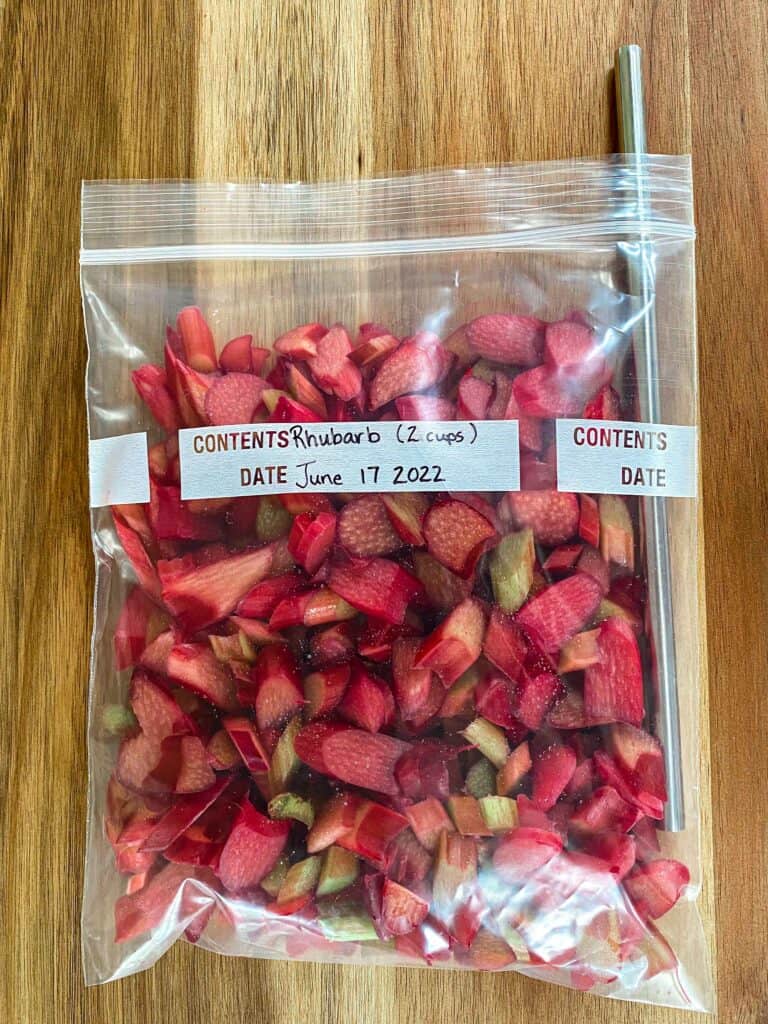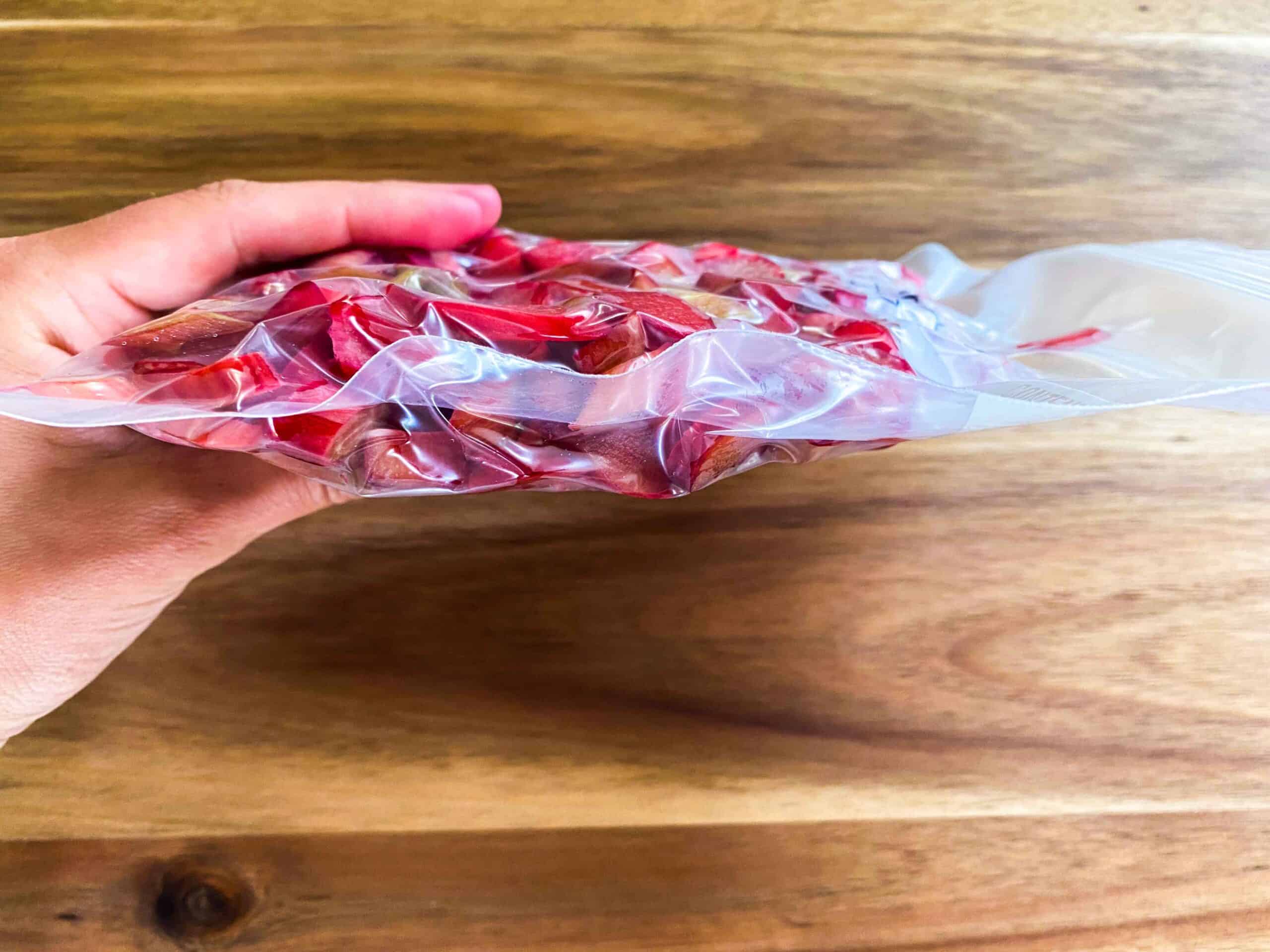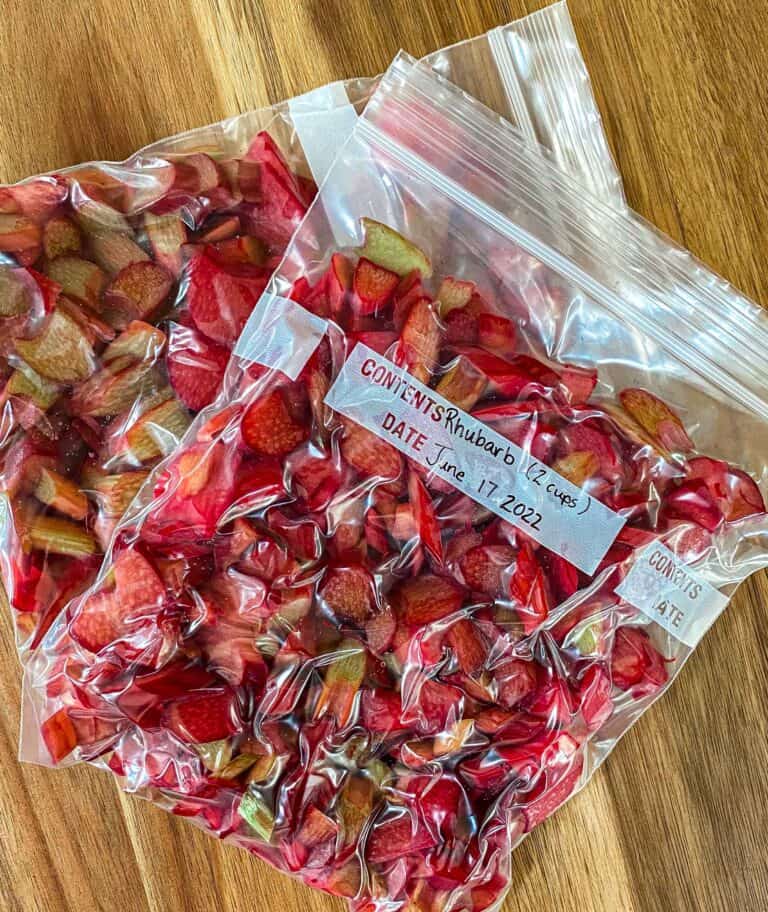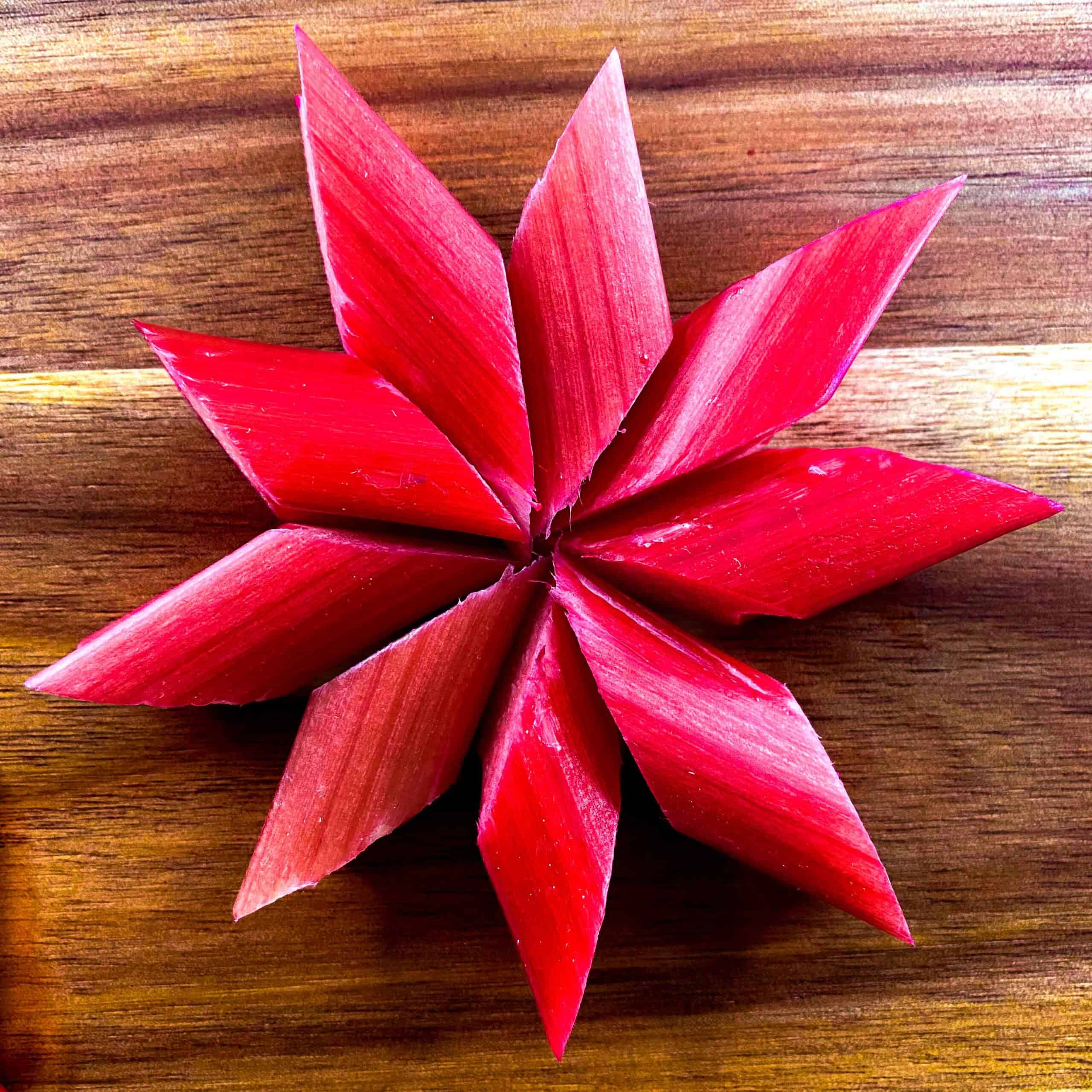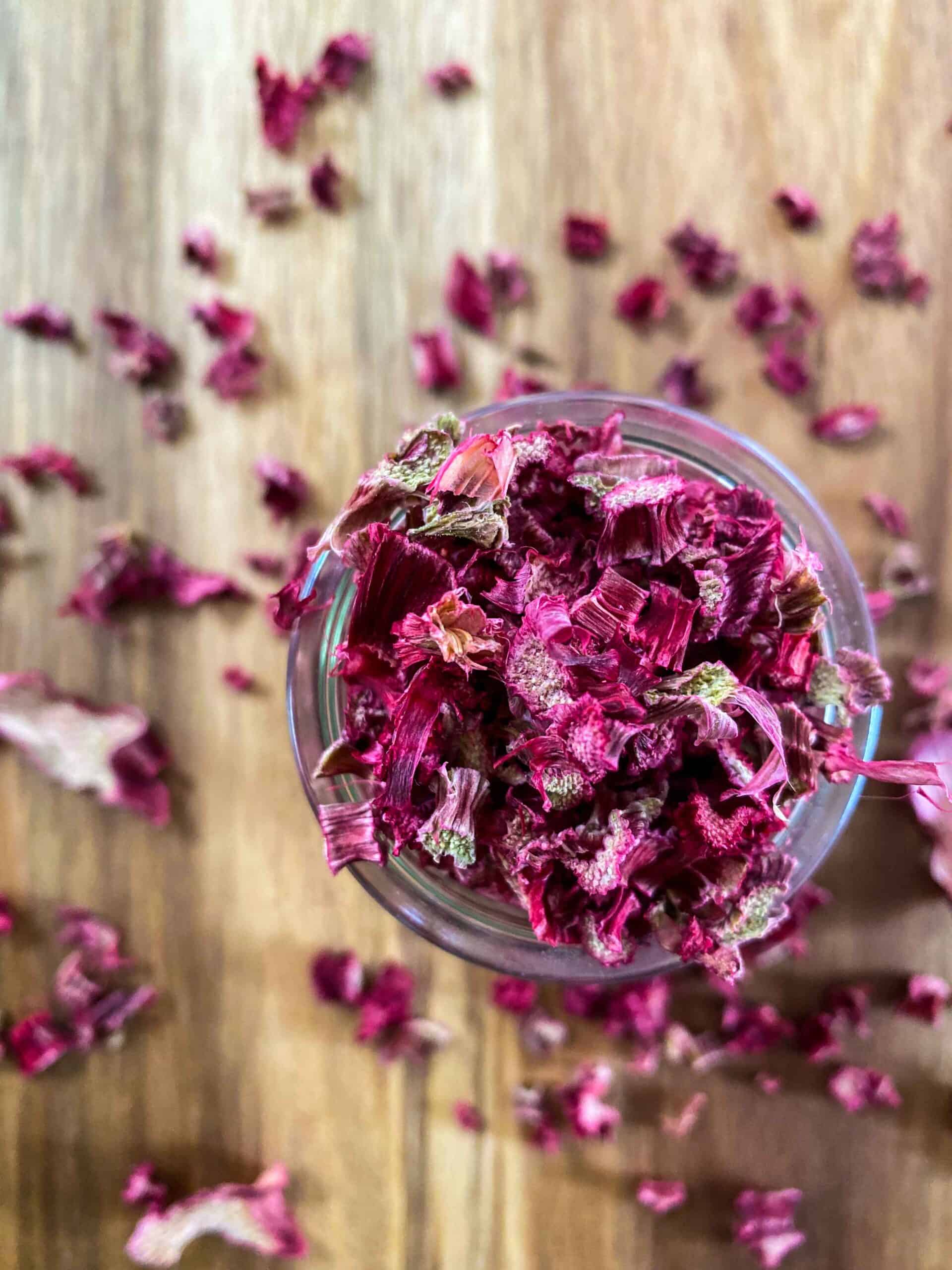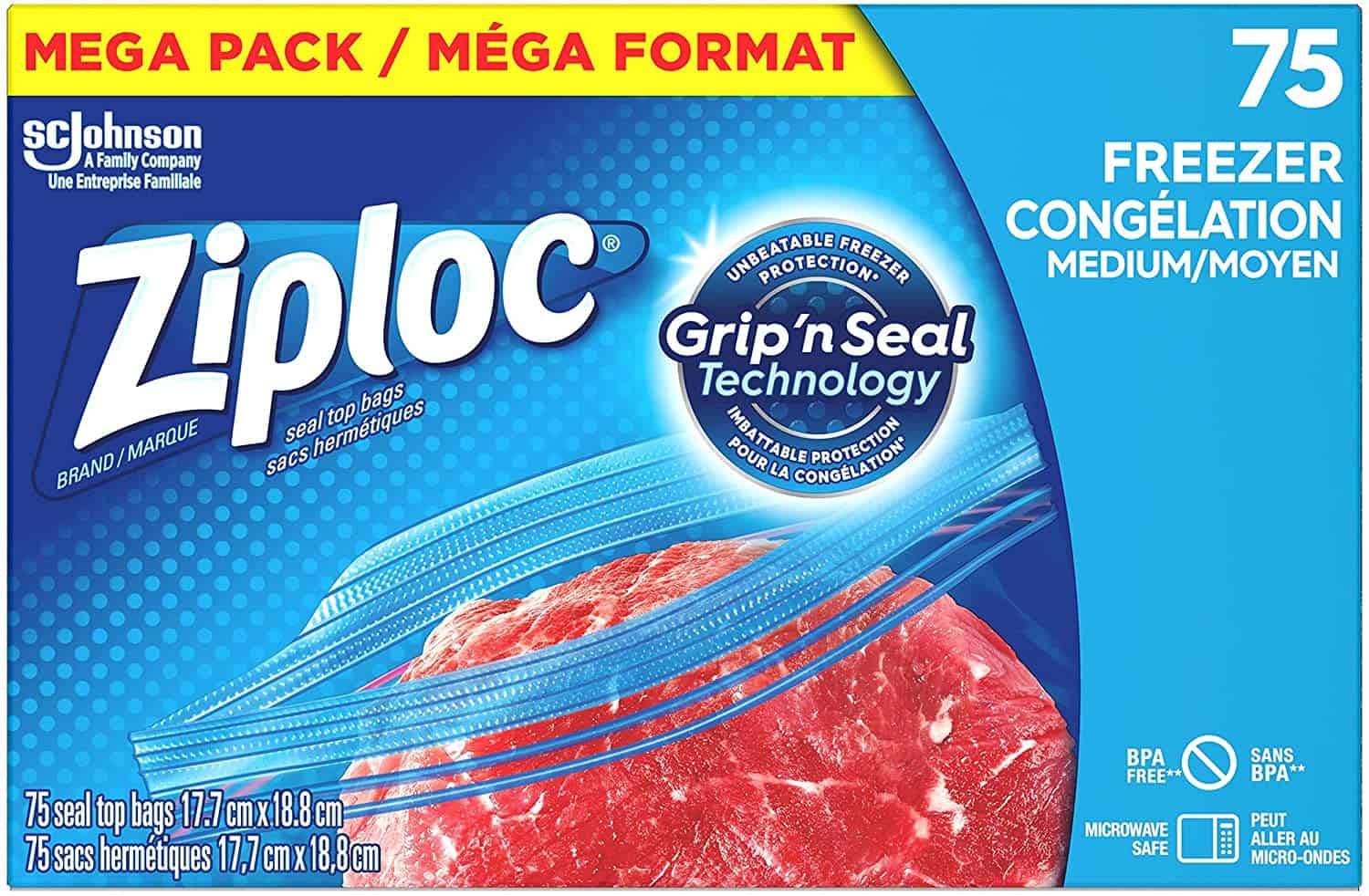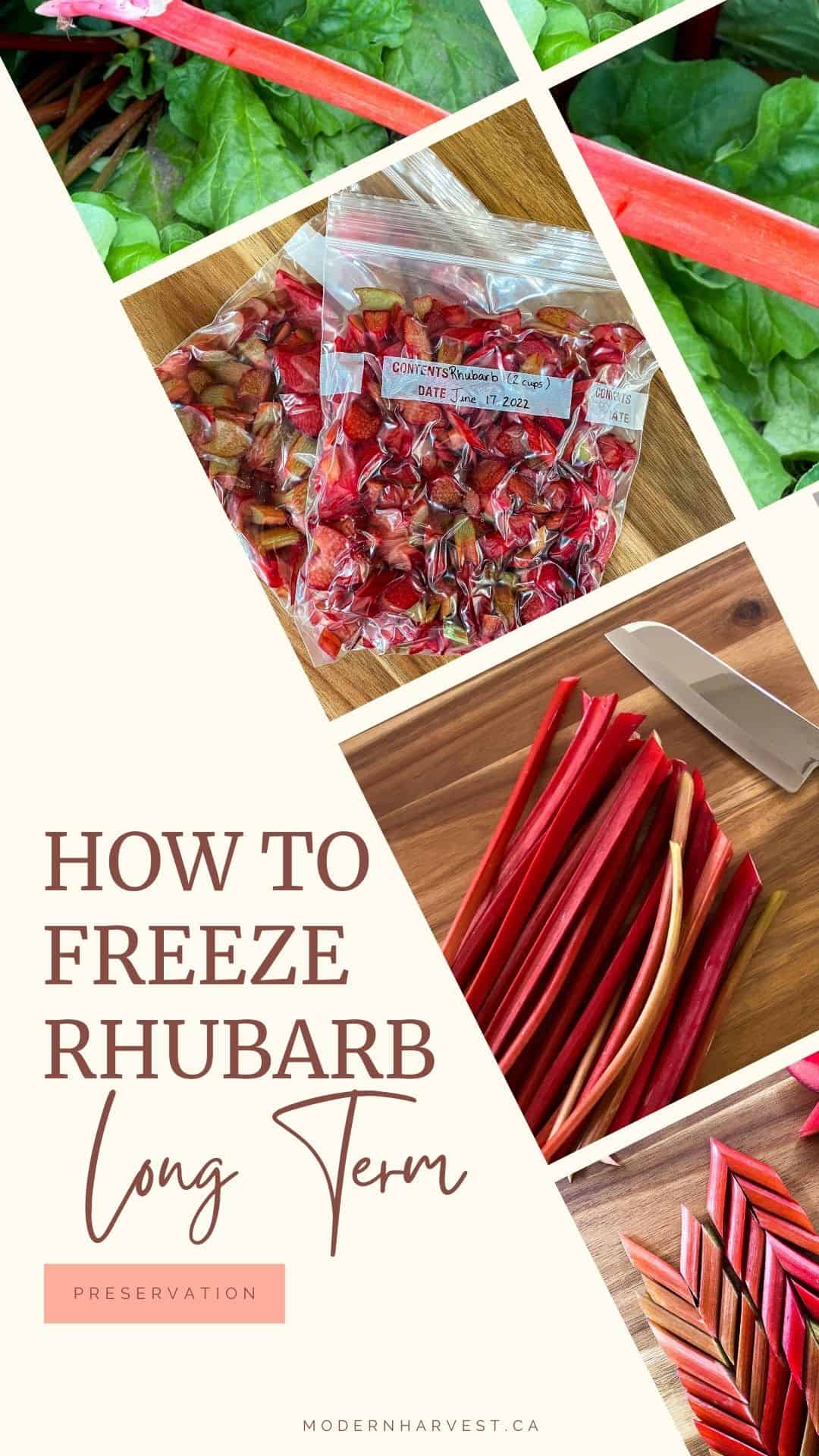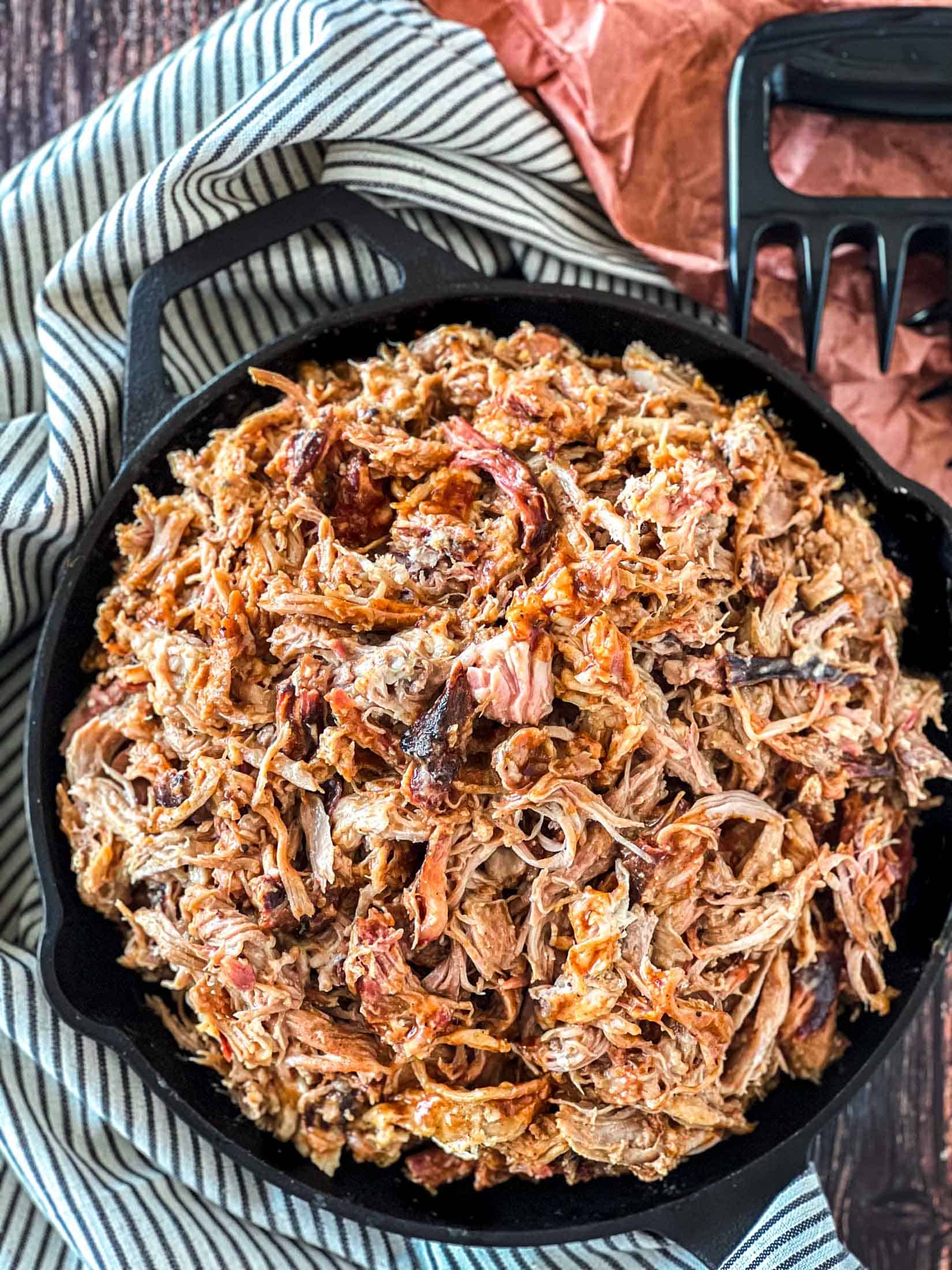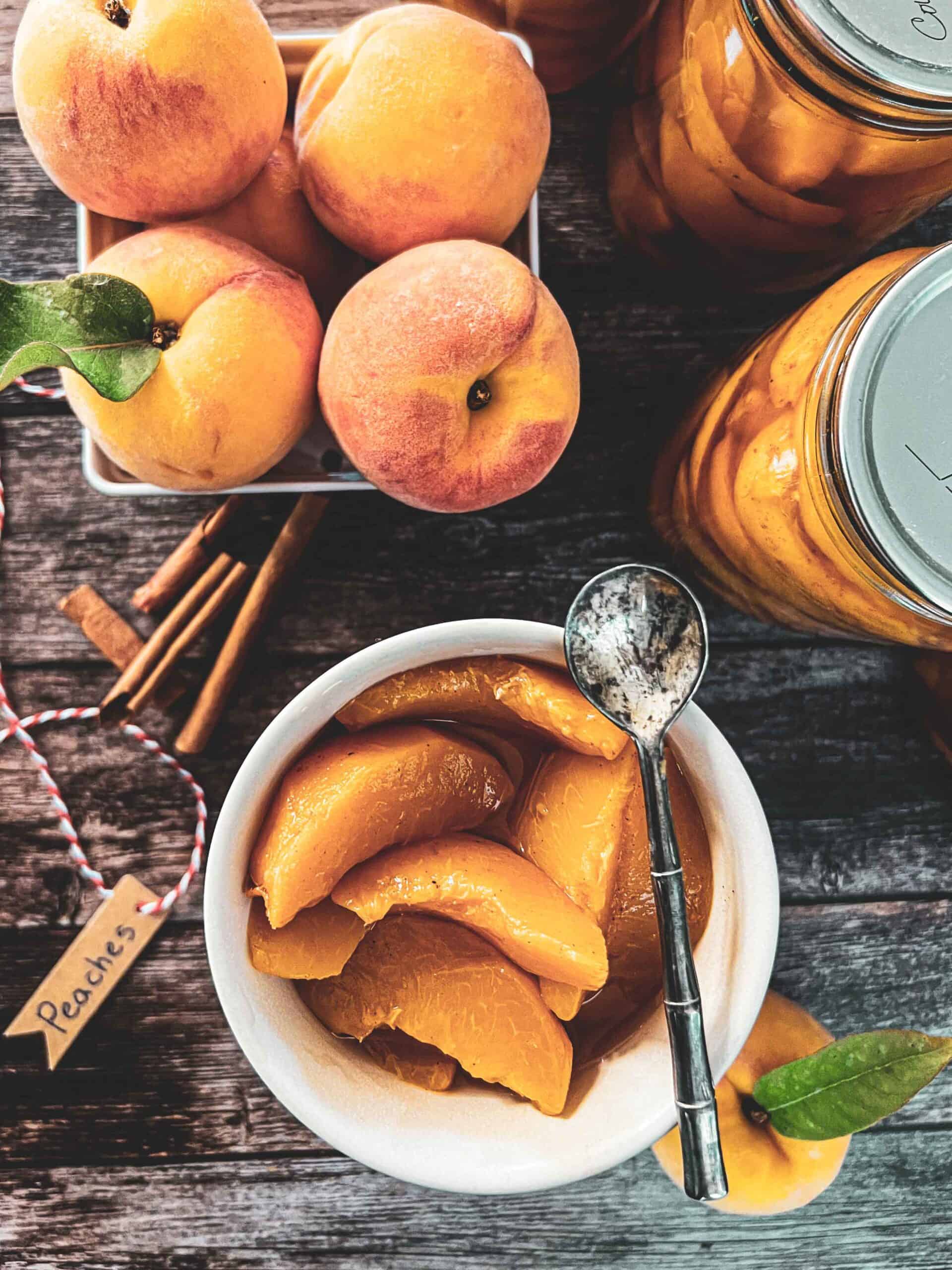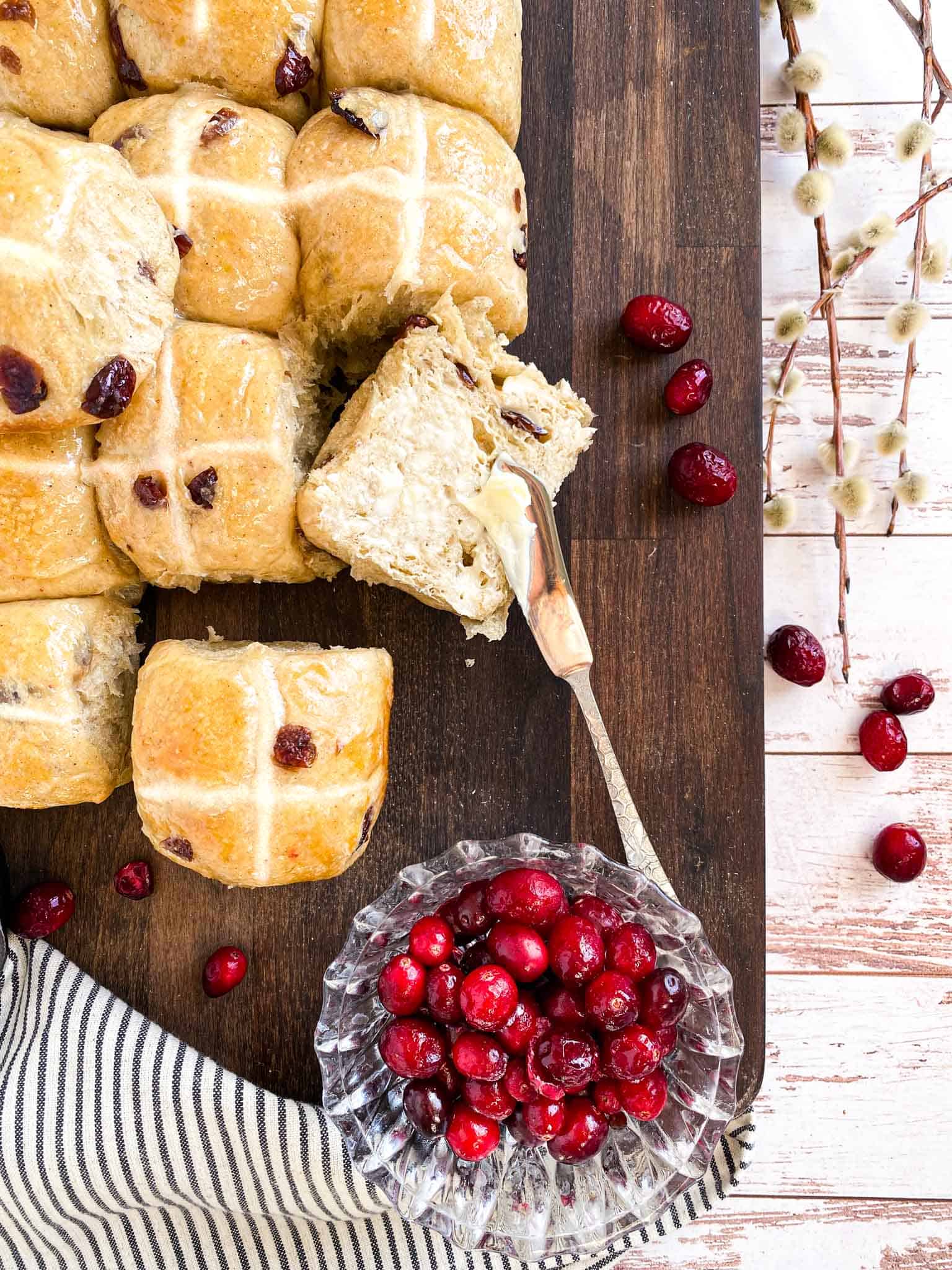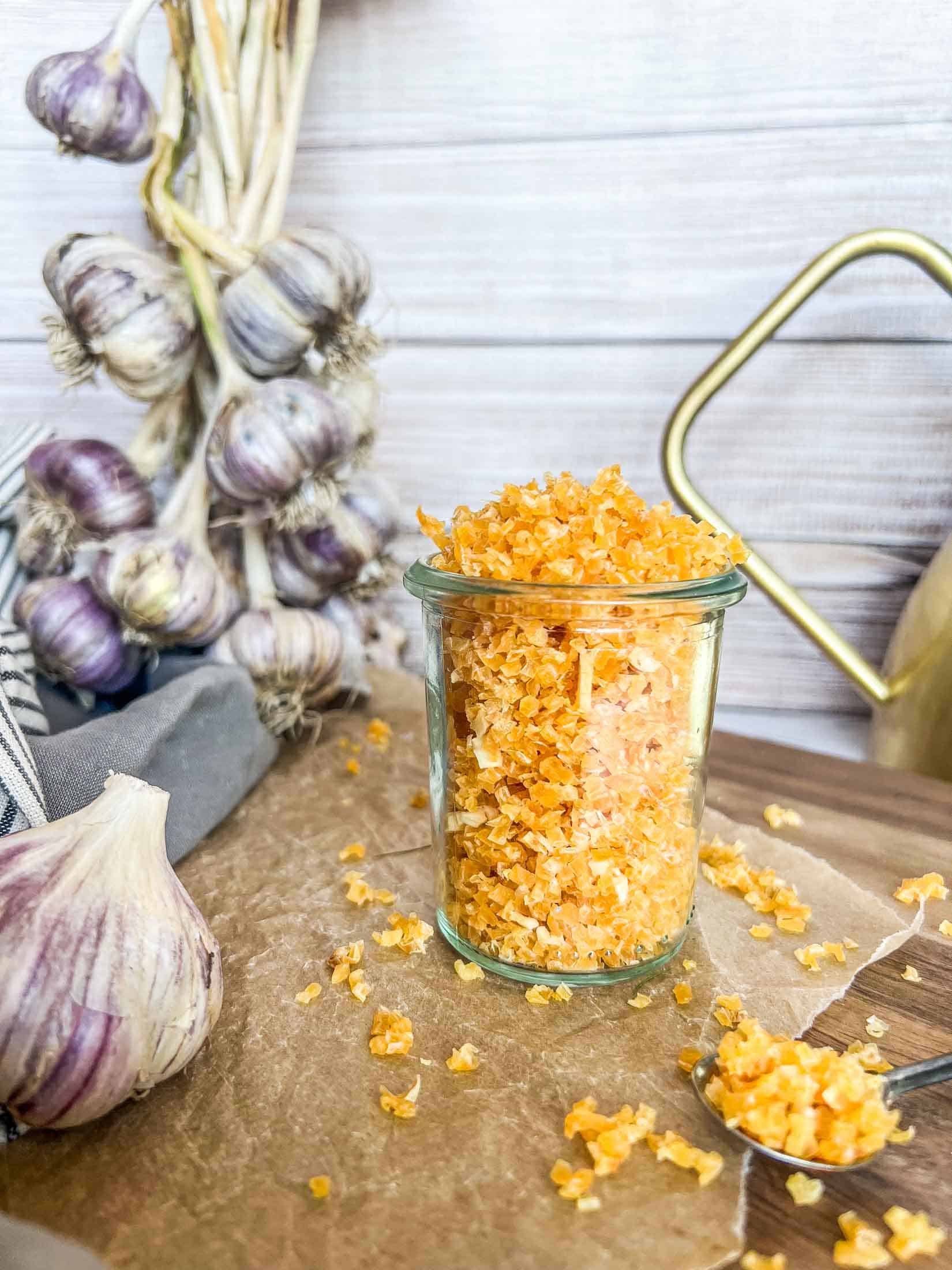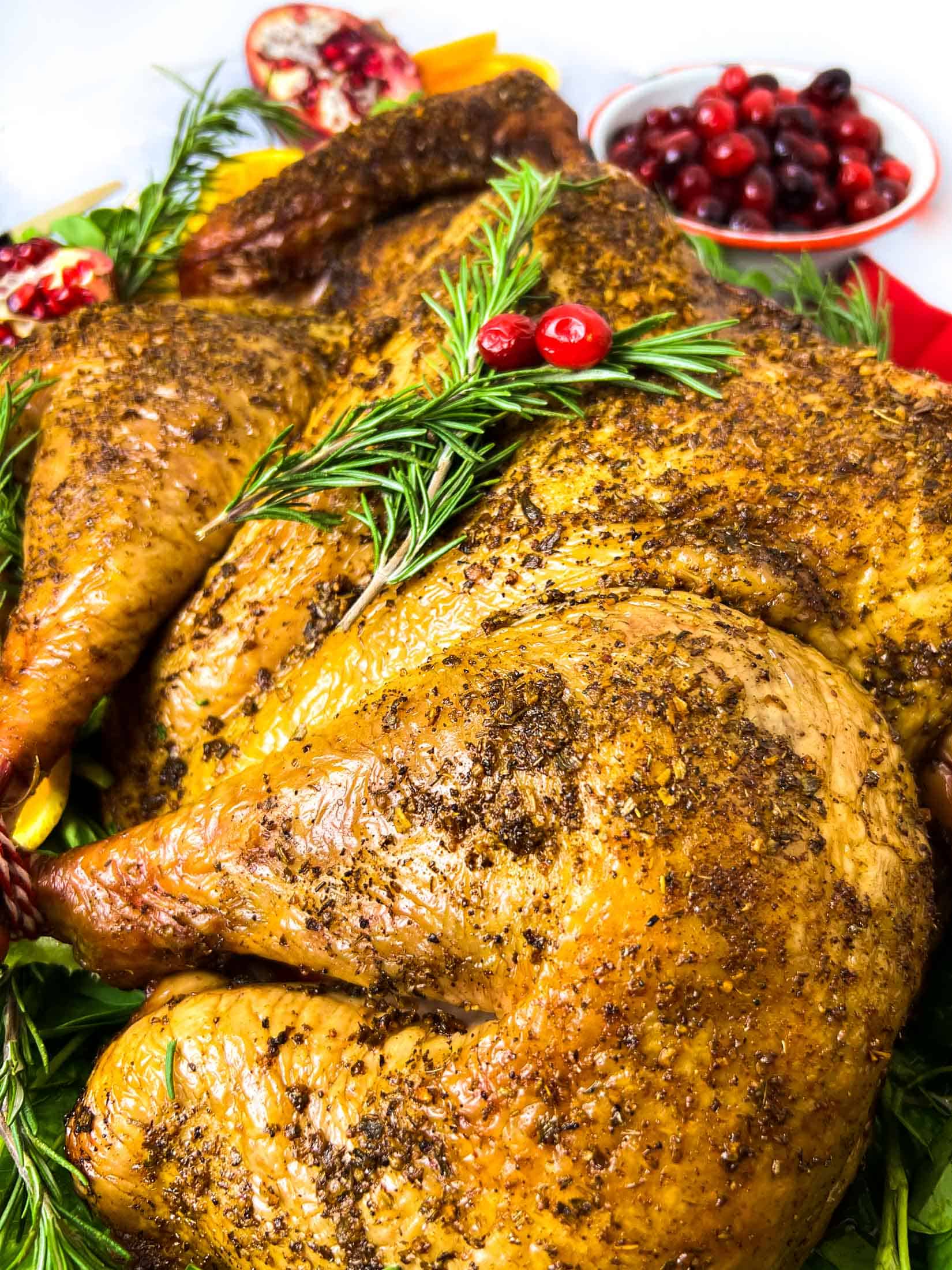How to Freeze Rhubarb- Long Term Storage For Fresh Cut Rhubarb
Read on to find out exactly how to freeze rhubarb for long-term storage. Freezing rhubarb is a convenient way to get the most out of this vigorous vegetable’s harvest. Peaking in late spring-early summer, rhubarb seems to be the gift that keeps on giving. Freeze rhubarb today to use in all kinds of baked goods, soups, and sauces later on. If you love the taste of rhubarb, you will love these Rhubarb Buttermilk Muffins With Streusel Topping and this easy Strawberry Rhubarb Freezer Jam Recipe with Vanilla and Cinnamon.
Growing perennial vegetable crops in colder zones is serious business- rhubarb seems to be the one plant that I don’t need to worry about winter killing. It mulches itself with large green leaves and actually thrives on the cold winters and cool springs that we are accustomed to on the Canadian prairies.
Why Freeze Rhubarb?
Freezing rhubarb is a simple way of preserving your plants bounty with minimal mess and equipment! Frozen rhubarb is super convenient to grab and toss into your favourite crumble, muffin, or sauce recipe. It maintains a nice soft texture when thawed- no toughness here!
Growing + Harvesting
Growing
Rhubarb loves cold growing zones and is ready to harvest in late spring to early summer. It is best grown in USDA growing zones 2-7.
Rhubarb produces extra stems when it gets a long winter chilling period with temperatures below -40… which makes it a great crop to grow in Northern Alberta and other chillier zones.
Precautions can be taken in warmer zones to help rhubarb thrive in extended periods of intense heat such as shade cloth.
Check out my rhubarb companion planting post to see what plants make great companions for rhubarb and what plants to steer clear from.
Harvesting
Make sure that your rhubarb plant is over a year old before you begin harvesting off of it to allow its root system to develop and thrive.
Pick stalks that are at least as wide as your finger! It is fine to pick thicker stalks- they will simply require extra chopping when it comes time to use them. Stalks should be at least eight inches long and are best when picked between 12-18 inches. I almost always have longer stalks (18-24 inches) and they taste just fine when mixed in with the others.
Twist and pull rhubarb stalks from the base of the crown rather than breaking or cutting higher up. Removing the stalk fully from the crown signals the plant to shoot up more stalks.
Snap off the leaves and wash thoroughly before chopping the rhubarb up to cook and preserve.
How to Freeze Rhubarb
Step 1. Remove any leaves from your rhubarb and discard- they are not safe for consumption. Thoroughly wash and dry your rhubarb stalks.
Step 2. Chop the rhubarb into 1/2 inch or smaller pieces, much like you would do with celery.
Step 3. Measure out 2 cups or 280 grams of rhubarb per bag or your desired amount. At this point you could do a pre-freeze. Spread the rhubarb out over a parchment lined baking sheet and let it freeze for 2-3 hours and then transfer to your bag. With rhubarb I don’t think this extra step is necessary because it easily breaks apart either way. I find that 2 cups spread out in a ziplock bag and frozen flat works best.
Step 4. Squeeze out as much air as you can before zipping closed. If you want to get even more air out, zip the bag almost all the way shut, insert a straw, and suck out as much excess air as you can.
Step 5. Label your zippered bags or containers and stow them away in your freezer for later use- up to 12 months.
Thawing Frozen Rhubarb
Rhubarb is easy to thaw. If you are in a rush, pop the ziplock bag or container into a sink of warm water and let it thaw and soften. If you have a little time, place the frozen rhubarb in a bowl, cover, and let it sit overnight. Drain excess liquid and use as you would fresh!
Tips + Tricks
Avoid freezer burn by removing as much air from your ziplock bag as possible. Zip your bag almost all of the way shut, insert a straw, and suck out the extra air. Alternately, you can use your hands to press out any excess air before zipping shut.
Fresh is best. Use freshly cut rhubarb stocks to freeze. The flavour, texture, and colour will be best when freshly cut and packaged.
Keep your rhubarb protected from the fluctuating temperatures that opening the lid or door of your freezer creates. This will help you to avoid freezer burn.
Cut the rhubarb according to what you think you will use it for. If you are making pies and crumbles, the pieces of rhubarb can be more chunky. If you tend to use it in muffins and other more delicate recipes, chop it more fine.
Other Methods of Preserving Rhubarb
Dehydrating- Check out my easy guide for dehydrating rhubarb– a less popular but time saving way to save lots of rhubarb with little space and effort. As a bonus I have included five simple ways to use up your dried rhubarb.
Freeze Drying– Freeze dried rhubarb holds its colour and texture really well. A downfall of freeze drying rhubarb is that most people don’t own freeze dryers… yet!
Jams + Jellies– Check out this simple Strawberry Rhubarb Freezer Jam recipe for an easy way to preserve your rhubarb and to use up your frozen rhubarb.
How-To Freeze Rhubarb – Printable
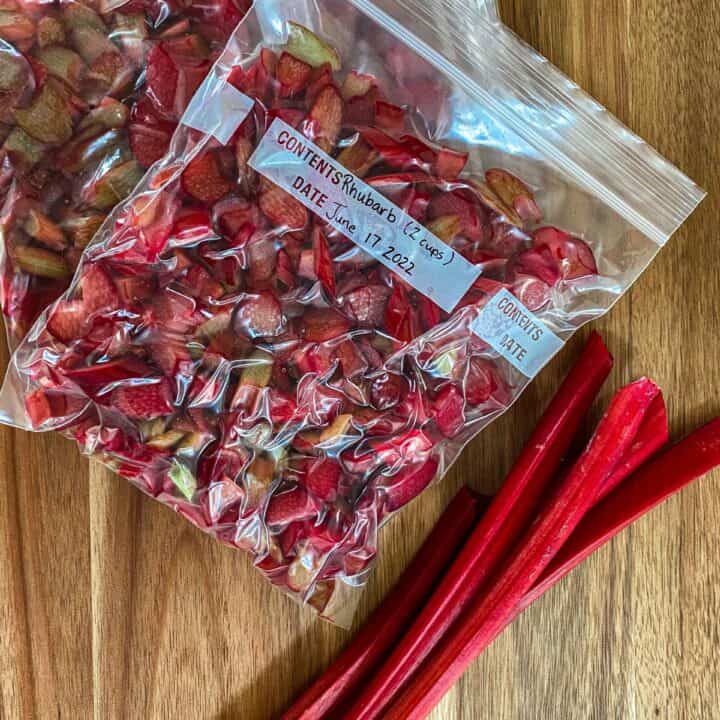
How-To Freeze Rhubarb
Read on to find out exactly how to freeze rhubarb for long-term storage. Freezing rhubarb is a convenient way to get the most out of this vigorous vegetable’s harvest. Peaking in late spring-early summer, rhubarb seems to be the gift that keeps on giving. Freeze rhubarb today to use in all kinds of baked goods, soups, and sauces later on.
Ingredients
- 2 cups rhubarb
Instructions
- Remove any leaves from your rhubarb and discard- they are not safe for consumption. Thoroughly wash and dry your rhubarb stalks.
- Chop the rhubarb into 1/2 inch or smaller pieces, much like you would do with celery.
- Measure out 2 cups or 280 grams of rhubarb per bag or your desired amount. At this point you could do a pre-freeze. Spread the rhubarb out over a parchment lined baking sheet and let it freeze for 2-3 hours and then transfer to your bag. With rhubarb I don’t think this extra step is necessary because it easily breaks apart either way. I find that 2 cups spread out in a ziplock bag and frozen flat works best.
- Squeeze out as much air as you can before zipping closed. If you want to get even more air out, zip the bag almost all the way shut, insert a straw, and suck out as much excess air as you can.
- Label your zippered bags or containers and stow them away in your freezer for up to 12 months.
Notes
Fresh is best. Use freshly cut rhubarb stocks to freeze. The flavour, texture, and colour will be best when freshly cut and packaged.
Recommended Products
As an Amazon Associate and member of other affiliate programs, I earn from qualifying purchases.

